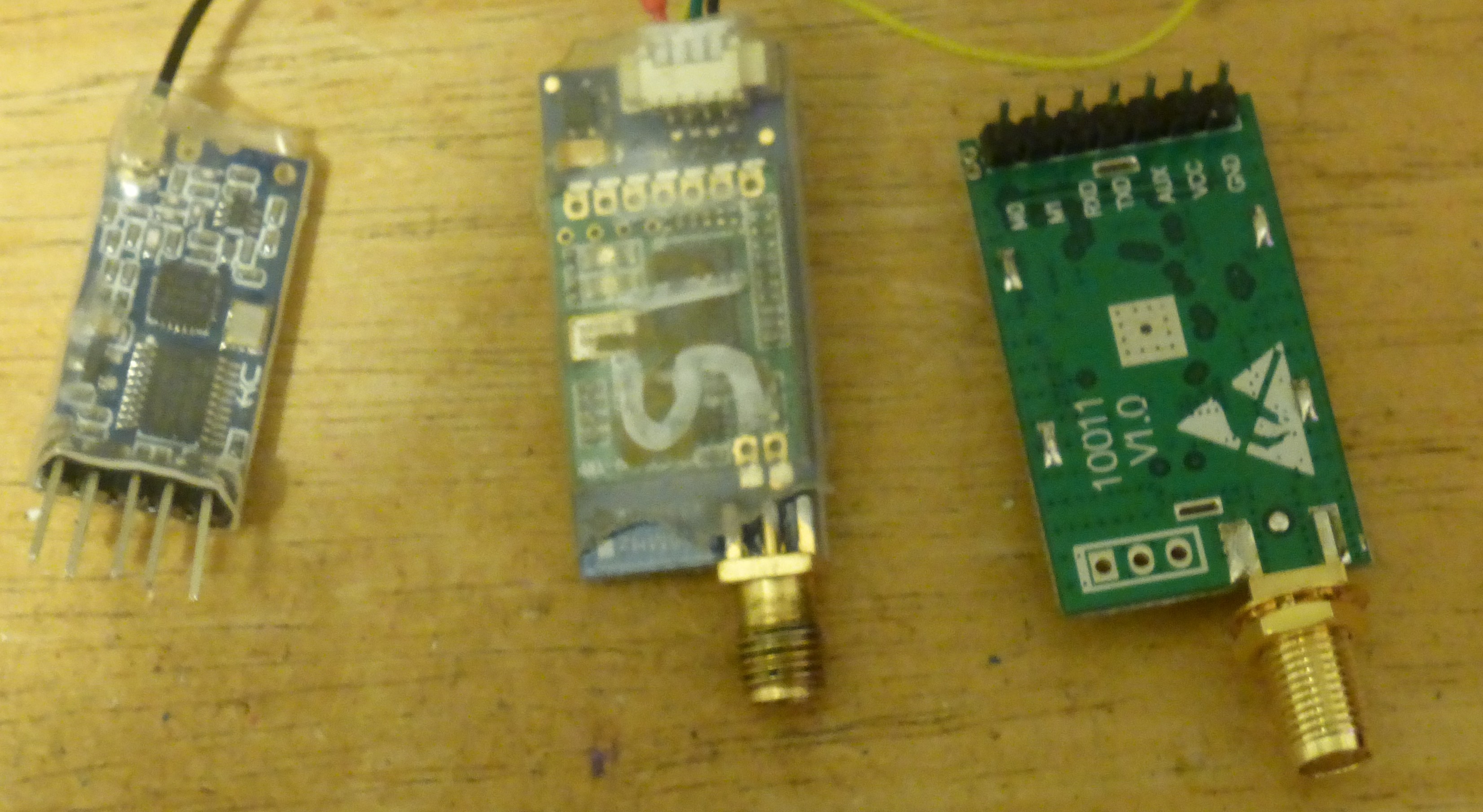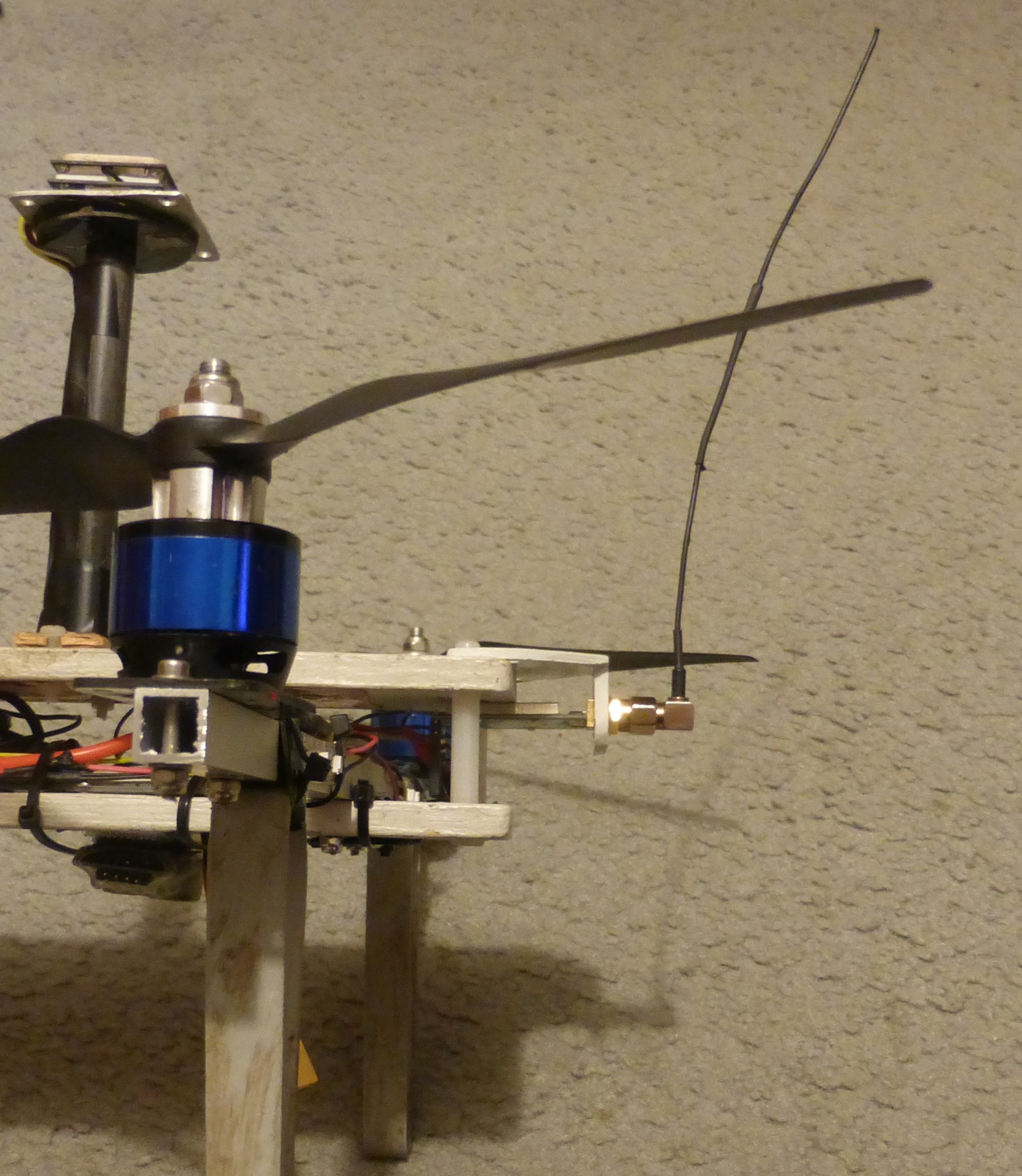Using LoRa for iNav Telemetry - stronnag/mwptools GitHub Wiki
380mm quadcopter, E45-TTL-100 LoRa device from Ebyte. The same 17cm antenna used for 3DR (433Mhz) were used with these LoRa devices (868Mhz).
SPRacingF3EVO with iNav 1.8.1 (development branch) firmware INAV/SPRACINGF3EVO 1.8.1 Nov 2 2017 / 20:00:55 (d7a974a7).
Serial Speed |
115200 |
Air Speed |
19200 |
Power |
14dBm |
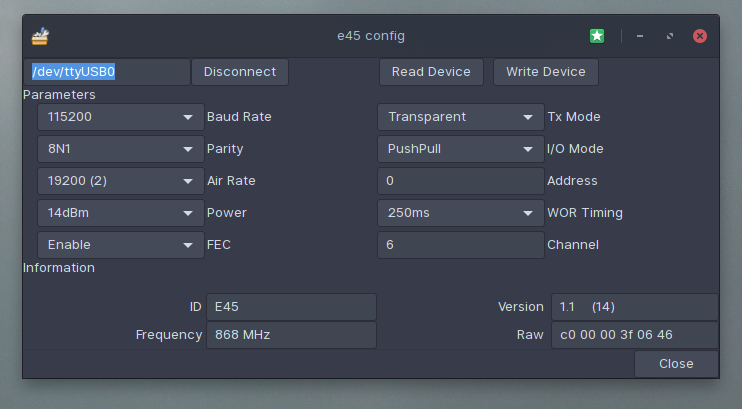
Note: The speeds were chosen as a result of experiments and advice from members of the iNav development community in order to minimise latency.
The aim was to investigate if the LoRa devices could support LTM with minimal data loss and without undesirable latency. Long range was not a consideration for this experiment (the maximum range experienced was c. 120m).
In particular, the author was interested to compare the performance to 3DR radio technology.
The same short mission was flown with the LTM rate at SLOW, MEDIUM and NORMAL. Images of the data points captured is shown below. The data point distribution and density is as expected for the respective data rates.
| Rate | Result |
|---|---|
Slow |
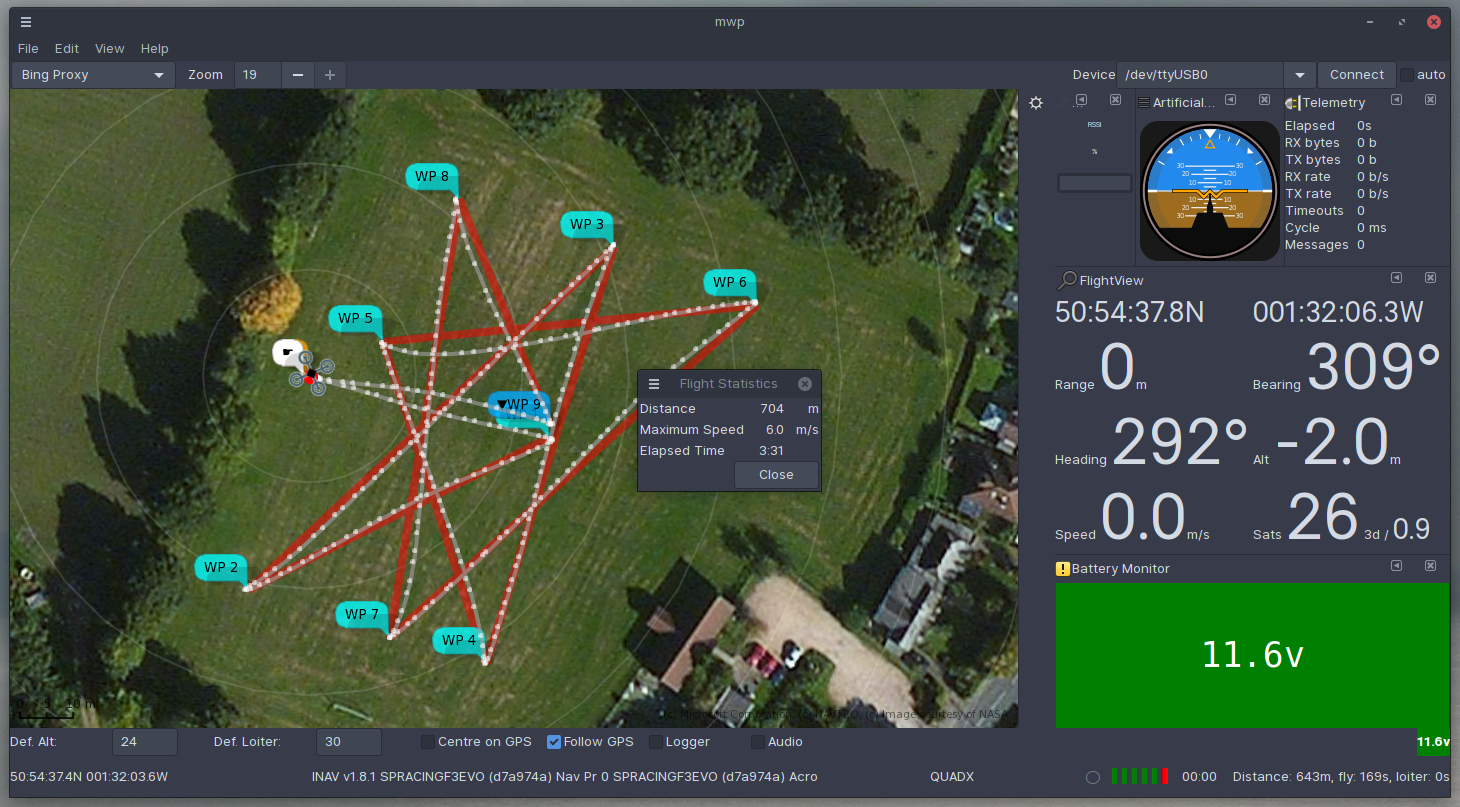
|
Medium |
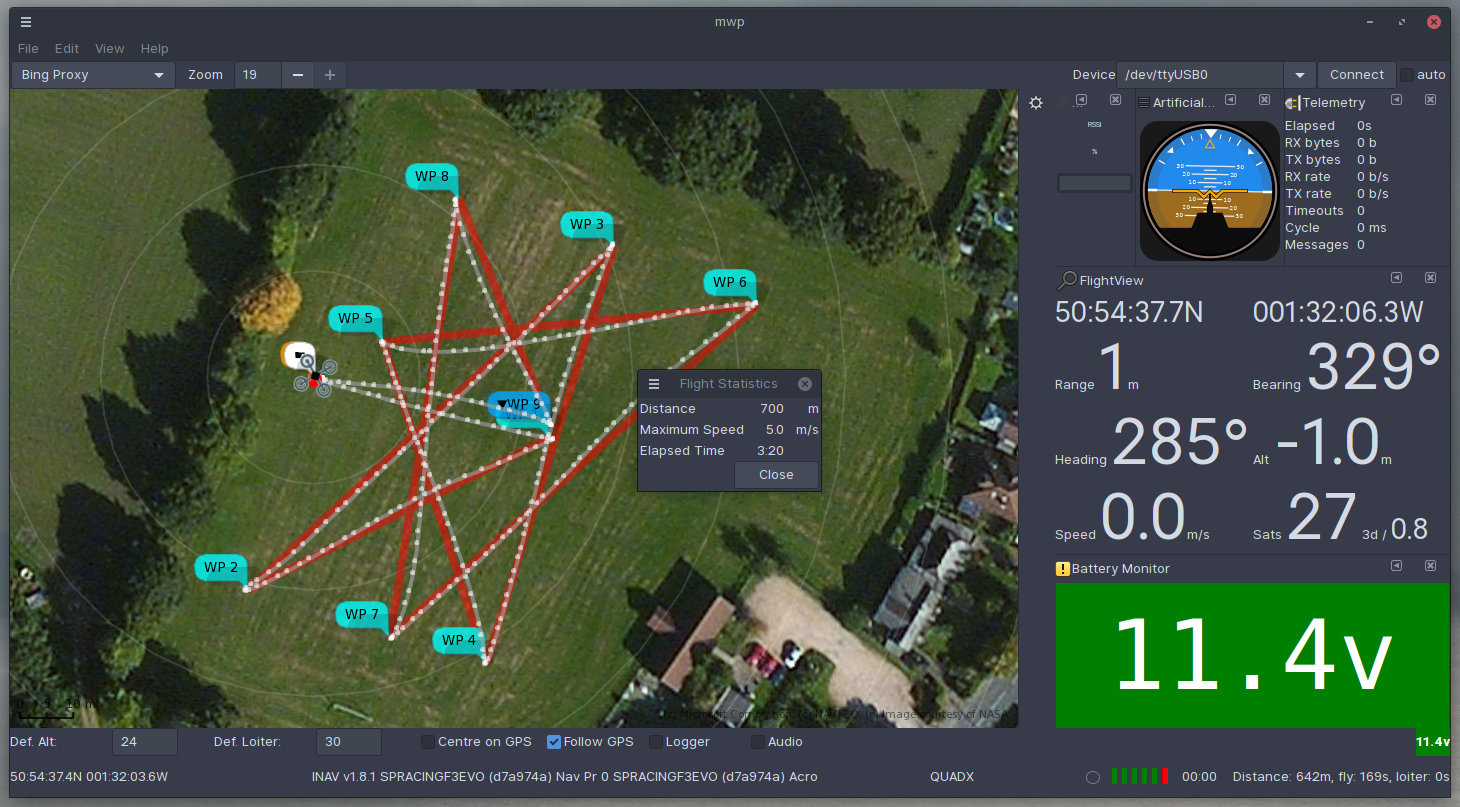
|
Normal |
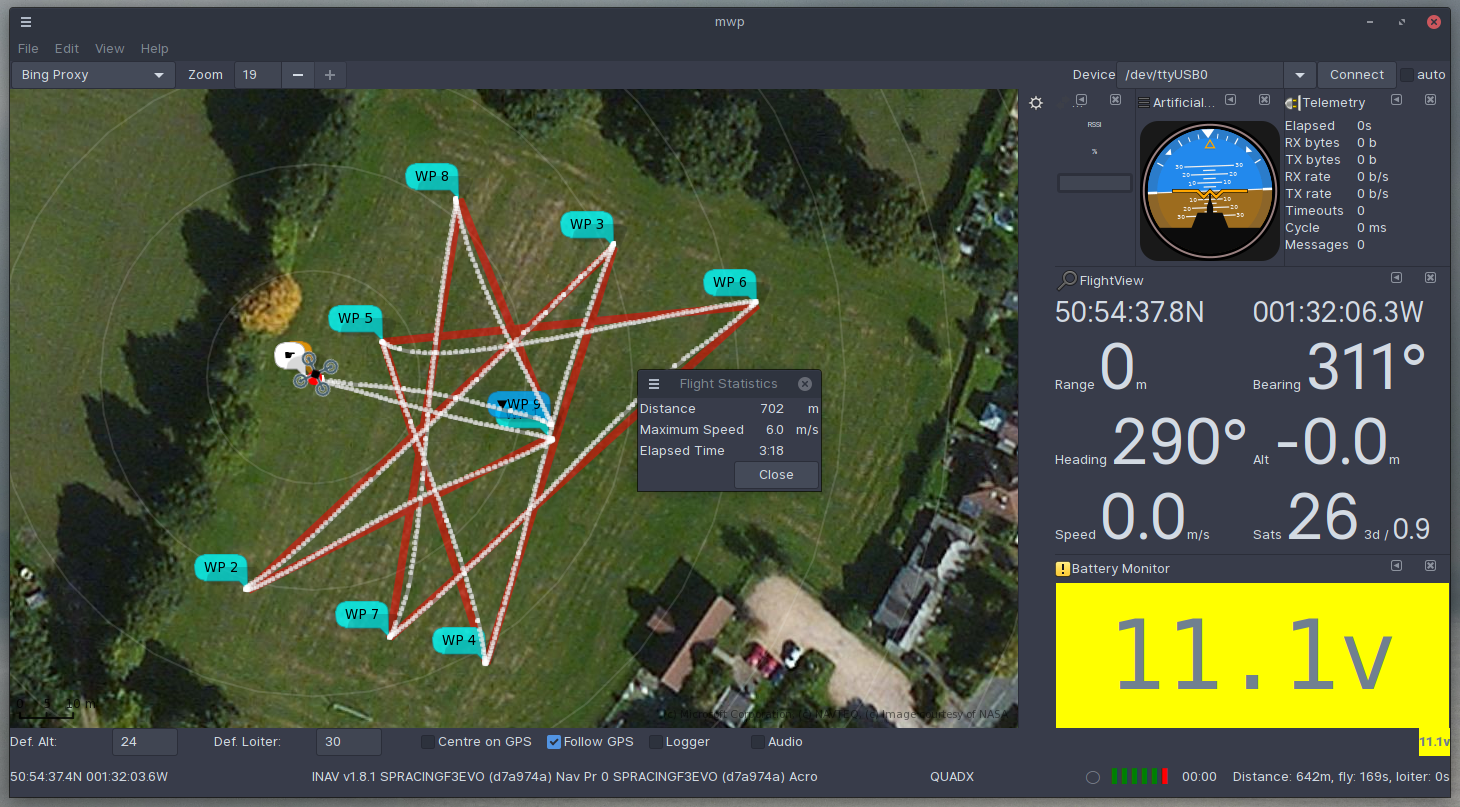
|
The LTM protocol includes a sequence counter for X-FRAME messages,
so it is possible to estimate packet loss. Note that we get 1 X-Frame
/ second regardless of LTM rate.
Slow |
Expected 90, got 91 at 91 |
Medium |
mwp_ltm_medium.log 196 samples 0 errors (0.00%) |
Normal |
Expected 127, got 128 at 128 |
These packet loss rates are entirely acceptable and comparable to those experienced with 3DR. Overall, the rates available do not appear to influence packet loss.
In this example, the same mission is shown with 3DR and LoRa as the telemetry devices. Note that these missions were flown about a week apart.
| Device | Result |
|---|---|
3DR |
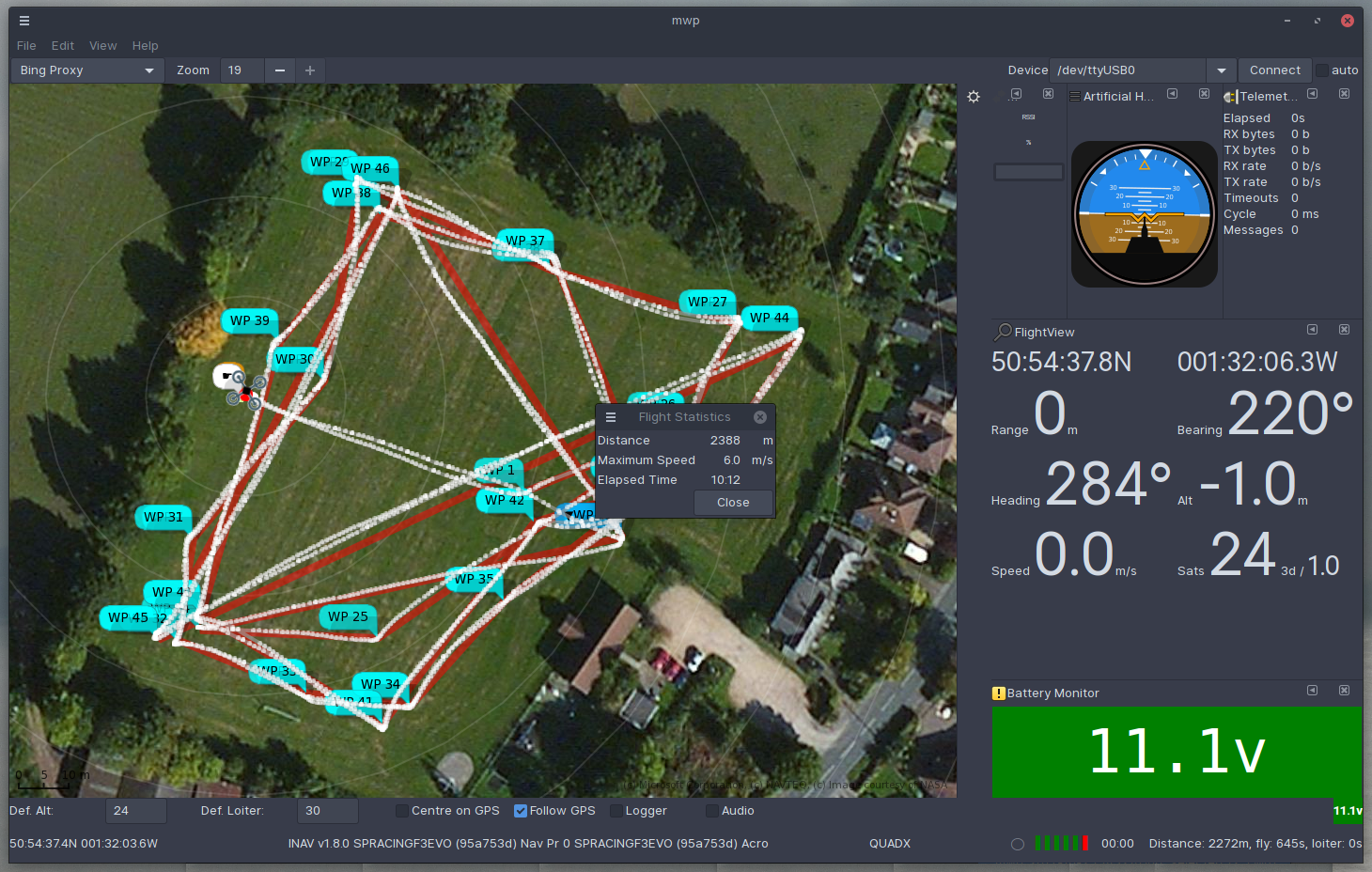
|
LoRa |

|
Just looking at the two images, the LoRa image looks to have a more consistent point density; this is confirmed by looking at the sequence counters and packet loss:
3DR |
Expected 43, got 44 at 44 |
Lora |
Expected 94, got 95 at 95 |
The LoRa test shows 50% of the packet loss experienced in the 3DR test.
I’m impressed; before the iNav development community started experimenting with LoRa devices, there was some concern that duty cycle and latency concerns would prevent use for meaningful telemetry. Subsequently we learned that duty cycle can be 100% as long as the power is less than 20dBm and that increasing the baud rate would reduce the latency.
One afternoon’s testing is hardly conclusive, nevertheless, I’m content that the E45-TTL-100 LoRa device is an effective alternative to 3DR and HC-12 radios. The only downside is the form factor; the device is larger than the HC-12 and 3DR devices and the vertical pins are really annoying (from left to right HC-12, 3DR, E45-TTL-100).
